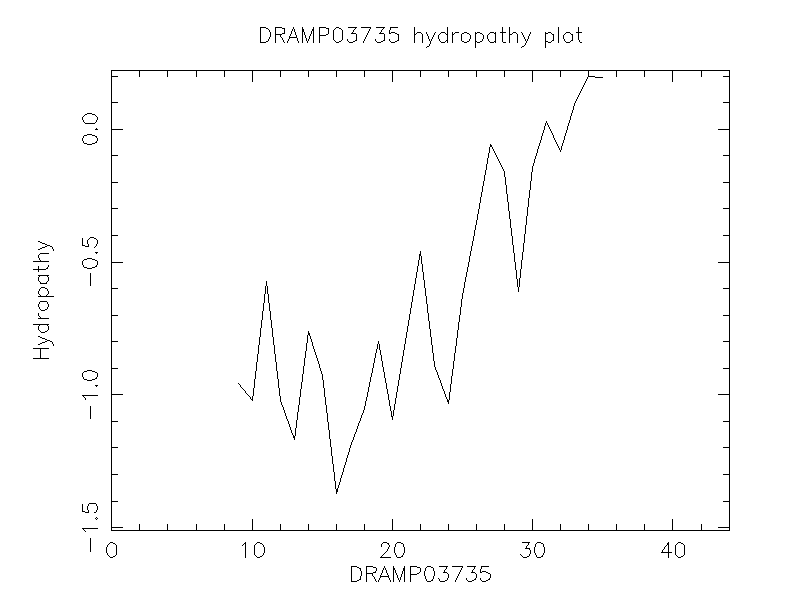General Information
-
DRAMP ID
- DRAMP03735
-
Peptide Name
- Opistoporin-1 (OP1; Non-disulfide-bridged peptide 3.5; Opistoporin-3, OP3; Arthropods, animals)
-
Source
- Opistophthalmus carinatus (African yellow leg scorpion)
-
Family
- Belongs to the antimicrobial peptide scorpion family
-
Gene
- Not found
-
Sequence
- GKVWDWIKSTAKKLWNSEPVKELKNTALNAAKNLVAEKIGATPS
-
Sequence Length
- 44
-
Protein Existence
- Protein level
Activity Information
-
Biological Activity
- Antimicrobial, Antibacterial, Anti-Gram+, Anti-Gram-, Antifungal
-
Target Organism
-
- [Ref.12354111]Gram-negative bacteria: Escherichia coli ATCC 25922 (MIC=12.5 µM), Escherichia coli DH5a (MIC=6.3 µM), Serratia marcescens ATCC 133880 (MIC=50 µM), Pseudomonas aeruginosa ATCC 257853 (MIC=12.5 µM), Klebsiella pneumoniae ATCC 13833 (MIC=6.3 µM), Salmonella choleraesuis ATCC 13311 (MIC=25 µM), Haemophilus influenzae ATCC 19418 (MIC=1.6 µM);
- Gram-positive bacteria: Bacillus subtilis ATCC 6051 (MIC=12.5 µM), Bacillus subtilis IP 5832 (MIC=12.5 µM), Listeria monocytogenes NCTC 11994 (MIC=12.5 µM), Micrococcus luteus ATCC 9341 (MIC>50 µM), Enterococcus faecalis ATCC 19433 (MIC=12.5 µM), Staphylococcus aureus ATCC 292136.3 (MIC>50 µM), Streptococcus pneumoniae ATCC 33400 (MIC=12.5 µM), Nocardia asteroides ATCC 3308 (MIC>50 µM);
- Fungi: Neurospora crassa (IC50=0.8 µM), Botrytis cinerea (IC50=3.1 µM), Fusarium culmorum (IC50=0.8 µM), Saccharomyces cerevisiae (IC50=2 µM).
-
Hemolytic Activity
-
- [Ref.12354111]10% hemolytic activity at 10 µM, 30% hemolytic activity at 100 µM against human red blood cells
-
Cytotoxicity
-
- Not included yet
-
Binding Target
- Cell membrane
Structure Information
-
Linear/Cyclic
- Linear
-
N-terminal Modification
- Free
-
C-terminal Modification
- Free
-
Nonterminal Modifications and Unusual Amino Acids
- Free
-
Stereochemistry
- L
-
Structure
- Alpha helix
-
Structure Description
- Not found
-
Helical Wheel Diagram
-
PDB ID
- None
-
Predicted Structure
- There is no predicted structure for DRAMP03735.
Physicochemical Information
-
Formula
- C220H357N59O63
Absent Amino Acids
- CFHMQRY
Common Amino Acids
- K
Mass
- 4836.61
PI
- 9.78
Basic Residues
- 8
Acidic Residues
- 4
Hydrophobic Residues
- 18
Net Charge
- +4
-
Boman Index
- -56.65
Hydrophobicity
- -0.518
Aliphatic Index
- 86.59
Half Life
-
- Mammalian:30 hour
- Yeast:>20 hour
- E.coli:>10 hour
Extinction Coefficient Cystines
- 16500
Absorbance 280nm
- 383.72
Polar Residues
- 12
DRAMP03735

Comments Information
Function
- At high concentrations, acts as pore former in cellular membranes and causes the leakage of the cells. At submicromolar concentrations, degranulates granulocytes and has hemolytic activity against human red blood cells. Also strongly inhibits the production of superoxide anions. Has a strong antibacterial activity against Gram-negative bacteria but is less active against Gram-positive bacteria. Also has antifungal activity.
Tissue specificity
- Expressed by the venom gland.
Literature Information
- ·Literature 1
-
Title
- Antibacterial and antifungal properties of alpha-helical, cationic peptides in the venom of scorpions from southern Africa.
-
Pubmed ID
- 12354111
-
Reference
- Eur J Biochem. 2002 Oct;269(19):4799-4810.
-
Author
- Moerman L, Bosteels S, Noppe W, Willems J, Clynen E, Schoofs L, Thevissen K, Tytgat J, Van Eldere J, Van Der Walt J, Verdonck F.Willems J, Noppe W, Moerman L, van der Walt J, Verdonck F.
- ·Literature 2
-
Title
- Cationic peptides from scorpion venom can stimulate and inhibit polymorphonuclear granulocytes.
-
Pubmed ID
- 12457879
-
Reference
- Toxicon. 2002 Dec;40(12):1679-1683.
-
Author
- Moerman L, Verdonck F, Willems J, Tytgat J, Bosteels S.
- ·Literature 3
-
Title
- Antimicrobial peptides from scorpion venom induce Ca(2+) signaling in HL-60 cells.
-
Pubmed ID
- 14575699
-
Reference
- iochem Biophys Res Commun. 2003 Nov 7;311(1):90-97.
-
Author

